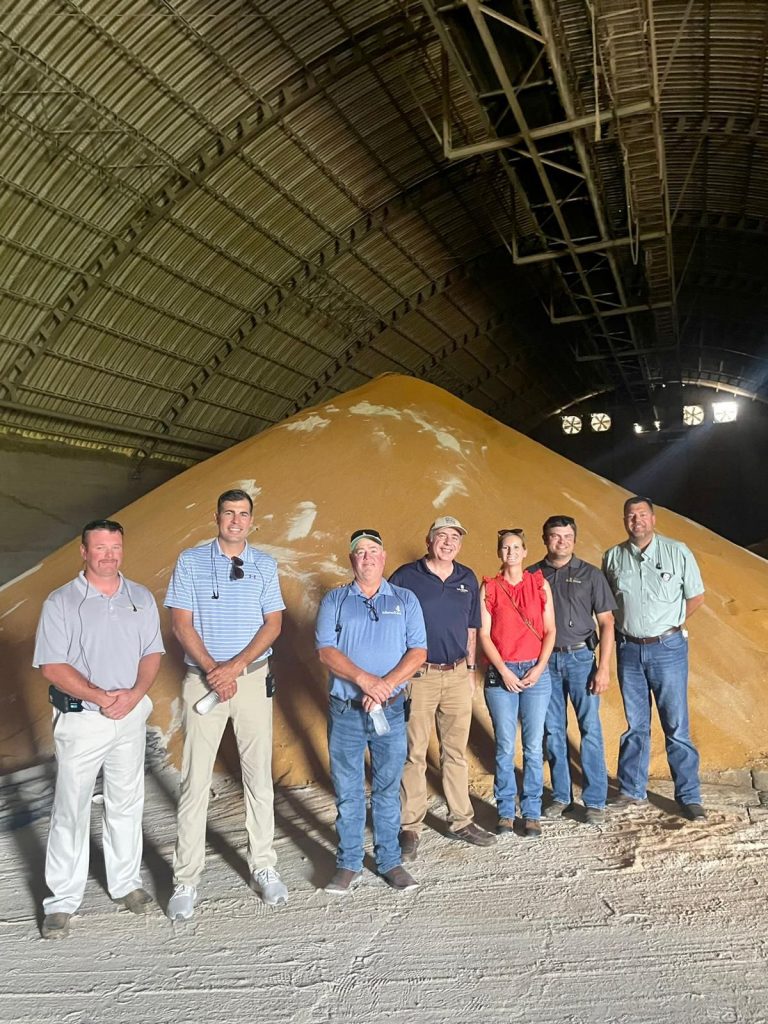A group of representatives from the Missouri Corn Merchandising Council, Ohio Corn Marketing Program and the Kentucky Corn Promotion Council traveled this week with staff from the U.S. Grains Council (USGC) to Sonora, Mexico, to meet with present and future memorandum of understanding (MOU) partners and see stinger and FOSS corn fiber analytic equipment, a grain testing machine using near infrared lights to measure protein and moisture, sponsored by their home organizations.
The organizations have been working with the Sonora Pork Producers Association, an MOU partner, in Ferropuerto on increasing the volume of distiller’s dried grains with solubles (DDGS) among swine, poultry and cattle producers and will begin working closely with the Hermosillo Cattle Producers Association on conducting proper analysis of feed rations to fully utilize the value of U.S. corn.
Through this mission, the Council looks to maintain its long-term relationships with major grain importers and end users across Sonora, while solidifying strategic relationships in Mexico by working directly with organizations in U.S. corn-producing states.
“We are fortunate to have our state members help work with Sonora producers, who are among the most integrated and sophisticated producers in Mexico,” said Javier Chavez, USGC marketing specialist in Mexico. “Through this collaboration, we have created a relationship that goes further than a ‘supplier and buyer.’ We are building friendships by helping develop the feed industry in this region, whether that be by helping them use better grains in the feed rations or giving them equipment to be able to buy DDGS in large quantities.”
While in Hermosillo, the group visited the office of the Union of Meat Producers of Sonora (UPRESON), where an MOU was signed upon delivery of FOSS fiber analytic equipment installed in their lab. The MOU creates an agreement between both parties to use the equipment on grain being supplied by the United States. The team also visited one member’s feedlot to see the level in which the feedlots operate and how this equipment will contribute to their work.
The next day, the group traveled to Obregon to visit Ferropuerto, a shuttle train facility owned by the Sonoran swine producers, to see the stinger equipment in operation. The stinger has helped make DDGS accessible by bringing in more volume with equipment that significantly cuts the time for unloading a hopper car of DDGS from eight hours to 25 minutes, helping increase volumes while being more efficient. After visiting the facility, team members visited the Norman E. Borlaug Experiment Station where they met with local farmers and shared their experiences with biotechnology and sustainable farming practices.
“The conversations and relationships built on this mission are so important to not only establish that confidence and trust in the equipment, but also pave a road for long-term collaboration,” said Sadie Marks, USGC manager of global programs. “Common ground was easy to find as both parties ultimately have the same goal. These investments create efficiency and improve our Mexican partners’ operations, which in return creates an opportunity for U.S. grain to fuel their growth.”
The state of Sonora is an important cattle and pork producing state in Mexico. In 2016, the Council identified Sonora as an untapped market for U.S. DDGS. The Pork Producers Association utilizes 50,000 metric tons (MT) (1,968,400 bushels in corn equivalent) of feed grains monthly, with 40 percent of that coming from the United States. While UPRESON prefers local crop, lack of availability does require the cattle organization to import from the U.S. at times. The organization’s average monthly consumption is 12,000 MT of corn (472,416 bushels) and 2,000 MT of DDGS (78,736 bushels in corn equivalent).
“This mission to Sonora was a two-way street as both the U.S. producers and end users in Mexico are the main drivers behind these investments. Both parties gained confidence by seeing the equipment, meeting with knowledgeable equipment managers and better understanding the operations and plans for growth first-hand. Mexico continues to be a top market for U.S. corn and DDGS, with a promising future,” Marks said.
About The U.S. Grains Council
The U.S. Grains Council develops export markets for U.S. barley, corn, sorghum and related products including distiller’s dried grains with solubles (DDGS) and ethanol. With full-time presence in 28 locations, the Council operates programs in more than 50 countries and the European Union. The Council believes exports are vital to global economic development and to U.S. agriculture’s profitability. Detailed information about the Council and its programs is online at www.grains.org.

